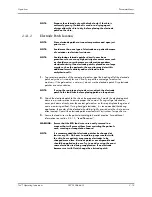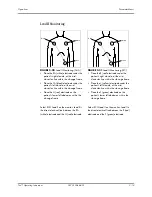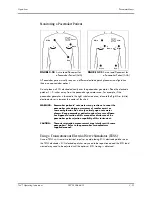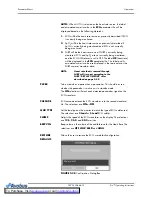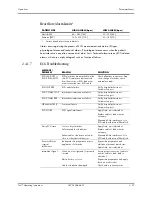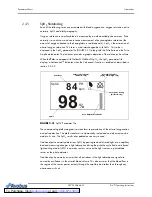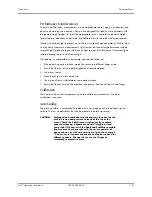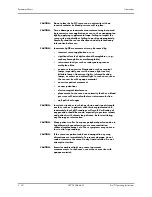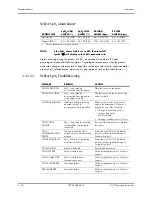
Trio™ Operating Instructions
0070-10-0666-01
2 - 27
Operations
Parameter Menus
Heart Rate Alarm Limits
Alarms occurring during the process of ECG measurement include two (2) types:
physiological alarms and technical alarms. Physiological alarms occur when the patient’s
heart rate value is equal to or exceeds set alarm limits. Technical alarms are any ECG-related
alarms, which are not physiological, such as functional failures.
2.4.1.7
ECG Troubleshooting
PATIENT SIZE
HIGH ALARM (bpm)
LOW ALARM (bpm)
Adult (ADU)
60 – 250 [150]
30 – 120 [45]
Pediatric (PED)
100 – 300 [175]
30 – 150 [70]
*
Factory default values shown in brackets.
*
MESSAGE/
PROBLEM
REASON
SOLUTION
ECG LEAD OFF, or
ECG XX LEAD OFF
ECG electrodes are detached from the
skin, ECG cables are disconnected
from the monitor or ECG lead wires
are disconnected from ECG cable
Check all patient connections. Prep
chest, change electrodes, check
and replace leads.
ECG INIT ERR
ECG module failure
Notify hospital technician or
Customer Support
ECG COMM STOP
Intermittent communication failure
Notify hospital technician or
Customer Support
ECG COMM ERR
Intermittent communication failure
Notify hospital technician or
Customer Support
HR ALM LMT ERR
Functional failure
Notify hospital technician or
Customer Support
ECG NOISE
ECG signal interference
Apply fresh, moist electrodes.
Replace cable or lead wires as
necessary.
Eliminate 60 Hz interference. Use
ECG cable with internal filter block.
Noisy ECG trace
Loose or dry electrodes
Apply fresh, moist electrodes.
Defective cable or lead wires
Replace cable or lead wires as
necessary
Patient cable or leads are routed too
close to other electrical devices.
Eliminate 60 Hz interference. Use
ECG cable with internal filter block.
Excessive Electro-
surgical
Interference
Inadequate skin preparation prior to
application of electrode
Repeat skin preparation and
electrode placement procedures.
Apply fresh, moist electrodes.
Intermittent Signal
Connections not tight and/or properly
secured
Ensure proper connection. (cable to
monitor, cable to lead, lead to
electrode).
Electrodes dry or loose
Repeat skin preparation and apply
fresh, moist electrodes.
Cable or leadwires damaged
Check with a continuity tester.



